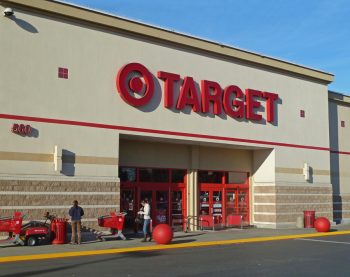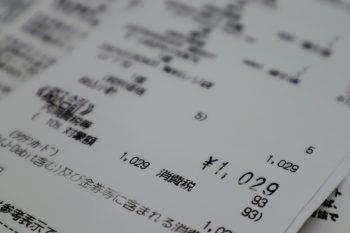
Market segmentation is a strategic tool used in target marketing to divide a broad market into smaller, more manageable segments based on shared characteristics. This process allows businesses to better understand their target audience, tailor their marketing strategies, and develop products and services that cater to the specific needs of their customers.
Market segmentation is used in target marketing to divide a broad market into smaller segments based on shared characteristics such as demographics, interests, behaviors, etc. This allows businesses to better understand their target audience, tailor their marketing strategies, and develop products and services that cater to the specific needs of these segments. The process involves identifying customer needs, dividing the market, analyzing segments, selecting target segments, developing a marketing mix, tailoring strategies, and monitoring and adjusting as needed.
Understanding Market Segmentation
Market segmentation is the process of dividing a broad consumer or business market into sub-groups of consumers (known as segments) based on shared characteristics such as demographics, needs, priorities, common interests, and other psychographic or behavioral criteria. The rationale for market segmentation is to achieve competitive advantage and superior performance by identifying segments of industry demand, targeting specific segments, and developing specific marketing mixes for each targeted market segment.
Market segmentation is important for several reasons:
- It provides a clearer focus for the company.
- It allows for better serving customer needs and wants.
- It helps improve marketing campaign performance.
- It informs product development.
- It enhances customer loyalty and better business decisions.
The Different Types of Market Segmentation
Market segmentation can be categorized into four main types:
- Demographic Segmentation: This method divides the market based on demographic factors such as age, gender, income, education, and occupation.
- Psychographic Segmentation: This method groups consumers based on their values, attitudes, interests, and lifestyles.
- Geographic Segmentation: This method divides the market based on geographic factors such as location, climate, and population density.
- Behavioral Segmentation: This method groups consumers based on their behaviors, such as purchasing habits, product usage, and brand loyalty.
In addition to these four main types, there are other segmentation strategies that can be used to enhance marketing efforts, such as technographic segmentation (groups people based on the technology they use) and firmographic segmentation (used in B2B marketing and groups organizations based on factors such as industry, company size, and revenue).
The Process of Market Segmentation in Target Marketing
The process of market segmentation involves several steps:
- Identifying customer needs and preferences: This is the first step in understanding the market landscape.
- Dividing the market into segments: The market is divided into smaller groups with comparable characteristics.
- Analyzing market segments: This involves researching and identifying different ways to divide a market into relatively similar, identifiable, and usable segments or groups.
- Selecting target market segments: Businesses need to choose the “right” target market segments that are most likely to buy their products or services.
- Developing a marketing mix: Once the target market segments are identified, businesses need to design, implement, and maintain a marketing mix suitable for the needs and preferences of those groups.
- Tailoring marketing strategies: Market segmentation allows marketers to manage and plan their marketing campaigns in a customized or personalized way per the customer’s needs and demands.
- Monitoring and adjusting: Market segmentation is not an exact science, and as businesses go through the process, they may need to adjust their strategies and target market segments based on new insights and changing market conditions.
Real-life Examples of Successful Market Segmentation
Several real-life examples of successful market segmentation in target marketing include luxury car manufacturers who use lifestyle segmentation to target top earners, Vinomofo which segmented web traffic into new visitors, returning visitors, and returning customers, and Bank of America which incorporated life stage segmentation in their digital marketing strategy.
Challenges in Market Segmentation
Despite its advantages, businesses can face several challenges when segmenting their market for target marketing, including costs associated with the process, identifying relevant segments, managing overlapping segments, balancing the number of segments, relying on outdated or inaccurate data, adapting strategies as market dynamics change, managing individuality within segments, and ensuring profitability.
The Impact of Technology on Market Segmentation
Advancements in technology have revolutionized market segmentation and target marketing by providing businesses with access to valuable customer data, enabling more personalized and targeted marketing campaigns, automating marketing processes, allowing real-time customization, and improving analytics. These advancements have made marketing strategies more efficient, effective, and adaptable to the ever-changing needs and preferences of consumers.
In conclusion, market segmentation is a powerful tool in target marketing that allows businesses to better understand their target audience, tailor their marketing strategies, and develop products and services that cater to the specific needs of their customers. Despite the challenges associated with the process, the benefits of market segmentation far outweigh the drawbacks, making it a critical component of any effective marketing strategy.
Frequently Asked Questions
What is the benefit of using technographic segmentation?
Technographic segmentation comes into play particularly in the technology market. By grouping people based on the technologies they use, businesses can better understand their customers’ technical literacy, preferred devices, software or platforms, and tailor their marketing strategies accordingly. This approach can also help in predicting future trends and behaviors.
What is firmographic segmentation and when is it useful?
Firmographic segmentation is used in B2B marketing. It groups organizations based on factors such as industry, company size, and revenue. This type of segmentation is useful when a company’s target audience is other businesses. It allows them to tailor their marketing messages to resonate with specific organizations.
How does market segmentation enhance customer loyalty?
Market segmentation enhances customer loyalty by allowing businesses to better understand and meet the specific needs of their customers. By targeting marketing efforts towards specific segments, businesses can create personalized experiences that are more likely to resonate with customers and foster loyalty.
What is the role of technology in market segmentation?
Technology plays a key role in market segmentation. It provides businesses with access to valuable customer data, enables more personalized and targeted marketing campaigns, automates marketing processes, allows real-time customization, and improves analytics. This makes marketing strategies more efficient, effective, and adaptable to the ever-changing needs and preferences of consumers.
What are some examples of demographic factors used in market segmentation?
Demographic factors used in market segmentation include age, gender, income, education, occupation, marital status, family size, ethnicity, and religion. These factors can provide valuable insights into a customer’s needs, preferences, and buying behavior.












